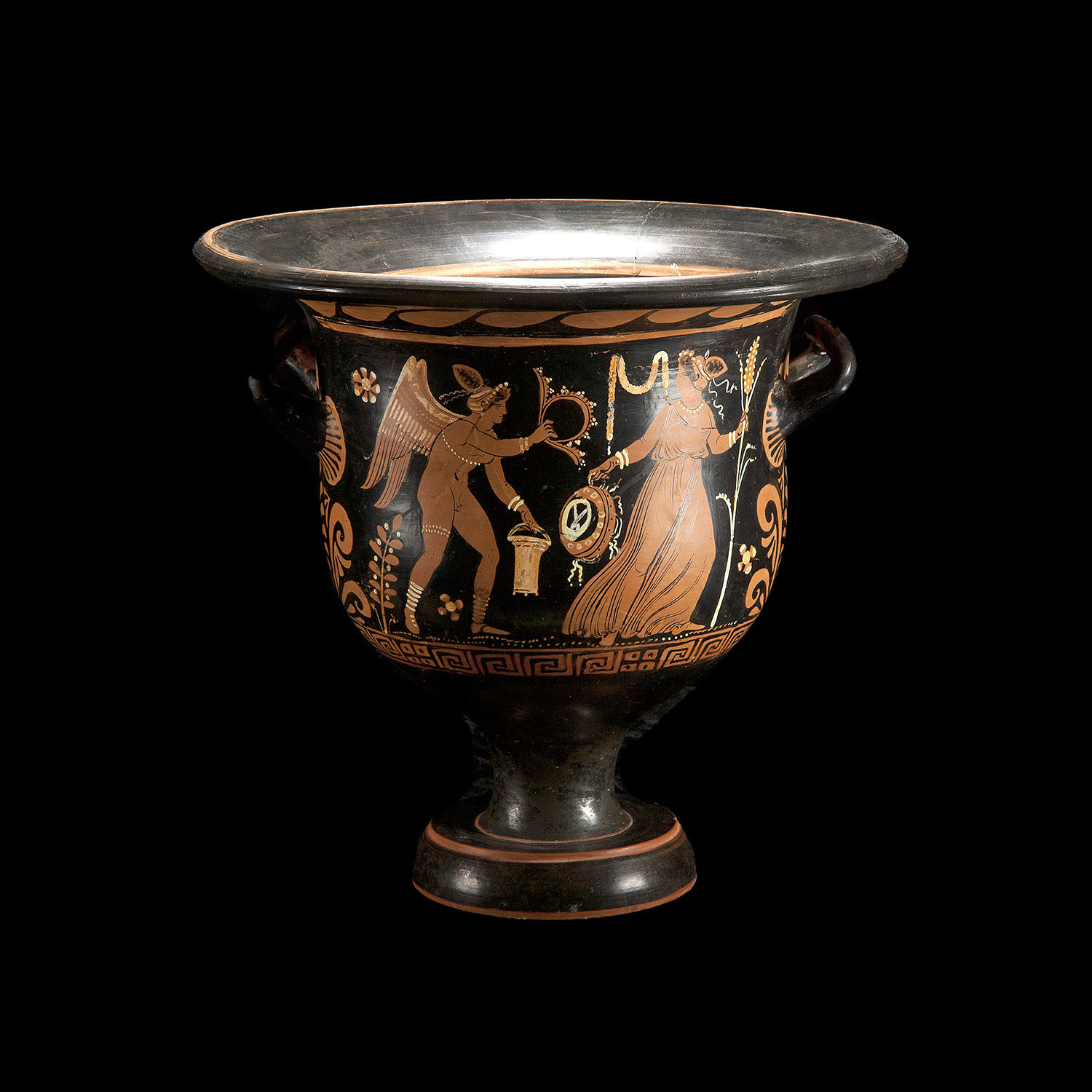zeland
Member
- Jan 7, 2024
- 11
- 6
“It is finished”
The Jewish Passover, the Last Supper, and the New Testament Sacrifice,
How are they connected?
The Jewish Passover, the Last Supper, and the New Testament Sacrifice,
How are they connected?
We will start this discussion with a question. Just before Christ died, He said “It is finished” (John 19:28-30). What does the word “It” refer to - what was finished?
The customary answer given by most people is that Christ’s work of salvation was now complete, but this is not correct. The apostle Paul states that for the work of our salvation to be complete, Christ had to first rise from the dead: “…16 for if the dead are not raised, then Christ has not been raised. And if Christ has not been raised, your faith is in vain; and you are still in your sins. Then those also who have fallen asleep in Christ are lost (1 Corinthians 15:12-18) – also see Romans 4:25. So then, what does the “It” refer to? To answer this question we first need to ask several other questions.
Now to the casual observer, the following questions may seem trivial. However that is not the case. A proper understanding of the relationship of these questions (and their answers) to each other will bring us to a more profound insight into God’s plan of salvation, and in doing so, we will answer our primary question - what does the “It” refer to?.
1 - At the last supper, why did Christ omit the 4th cup of wine (the Cup of Consummation)?
2 - On the way to Calvary, Christ was offered a cup of wine (Matthew 27:31-34; Mark 15:22-23), but he refused it! Why?
3 - Did Christ drink the 4th Cup – if so, when and where?
4 - When did the Last supper end? What is the significance of the answer to this question?
5 - When did Christ’s sacrifice begin? When did it end – or did it? See Malachi 1:10-11; Hebrews 8:1-3.
6 - How did the crucifixion become a sacrifice?
7 – In Luke 19:22 we read: “… do this in remembrance of me”. What does the word “this” refer to? What was it that the apostles were supposed to do?
To answer the above questions, we need to go back to the night of the original Passover, and the requirements that God set forth for the exodus from Egypt.
In Exodus 12:1-10 we see where God sets forth the requirements for the exodus of the Jewish people from Egypt. He then commands the Israelite's (three times) to remember this event as a perpetual ordinance (Ex. 12:14, 17, and 24). So the Passover Celebration becomes the most important sacrifice for the Jewish people.
But now there seems to be a problem! In Malachi 1:10-11 (also see Hebrews 8:1-3), God says that He will no longer accept this old sacrifice, but refers to a new, most pure, continual sacrifice – “from the rising of the sun to setting of the sun!” So this brings up a question. Why would God command the perpetual remembrance of a form of sacrifice (The Passover) which, at some point in the future, He would no longer accept?
Answer - It was never God’s intention that the manner of fulfilling of the requirements of Exodus 12:14, 17, & 24, would stay the same i.e. the Passover Seder meal. At the coming of Christ, the manner (or outward form) of this perpetual remembrance would change, but not the basic elements. Note the following comparison!
Elements of the Old Testament Passover Sacrifice:
An unblemished lamb would be slain;
The blood would be shed;
And the lamb must be consumed (Exodus 12:8)
Elements of the New Testament Passover Sacrifice:
Christ, the unblemished Lamb of God (John 1:29) would be slain (John 19:30);
The blood would be shed; (John 19:34);
And the Lamb must be consumed; Exodus 29:33; 1 Corinthians 5:7-8; John 6:53-56; Matthew 26:26.
Note - Paul’s statement in 1 Corinthians 5:8 is a direct reference back to John 6: 53. 1 Corinthians 5:8 is also the New Testament counterpart of Exodus 12:8 – the Lamb must be consumed. Also, Christ’s words “Do this in remembrance of Me” (Luke 22:19), is the New Testament counterpart of Exodus 12: 14, 17, & 24.
Restating this using modern computer terminology. At the coming of Christ, the old Jewish Passover sacrifice was “upgraded” to the New Testament Passover Sacrifice – The Holy Sacrifice of the Mass. This “upgrade” took place at the Last Supper when Christ instituted the Holy Eucharist. In other words, the Last Supper was the first Catholic Mass where the apostles were consecrated as the first Bishops of the Catholic Church (prefigured by Exodus 29:33)
As stated above, this new sacrifice (The Mass) would still contain the basic elements of the old one: an unblemished lamb would be slain; the blood would be shed; and the lamb would be consumed, and therefore it would continue to fulfill the requirements of exodus 12 as a perpetual ordinance.
At the Last Supper, the priesthood of Christ replaced the Levitical priesthood of the Old Testament. In other words, in Christianity, the Eucharist at Mass has replaced the Jewish Passover meal.
With the above discussion in mind, let us now look at the questions that are listed at the beginning of this article and see how they fit in.
1 - Why did Christ omit the 4th cup of wine (the Cup of Consummation) at the last supper?
2 - On the way to Calvary, Christ was offered a cup of wine (Matthew 27:31-34; Mark 15:22-23), but he refused it! Why?
3 - Did Christ drink the 4th Cup – if so, when and where?
4 - When did the Last supper end? What is the significance of the answer to this question?
5 - When did Christ’s sacrifice begin? When did it end – or did it? See Malachi 1:10-11; Hebrews 8:1-3
6 - How did the crucifixion become a sacrifice?
7 - In Luke 19:22 we read: “… do this in remembrance of me”. What does the word “this” refer to? What was it that the apostles were supposed to do?
Questions 1 & 2, have the same answer. Most Protestant commentators will say that Jesus refused the wine, on the way to Calvary, because it contained myrrh, a pain killer, and He wanted to suffer the maximum. If this could be a secondary consideration, it would be a very minor one. The main reason Jesus refused to drink the wine on the way to Calvary, is because he wanted to wait till just before he died. It is for this same reason that Christ omitted the 4th Cup at the Last Supper.
So why did Christ not want to drink the wine until He was on the cross? Remember that Jesus had omitted the 4th Cup (the Cup of Consummation) at the Last supper, and therefore the Last Supper was not yet finished. The Last Supper ended, with Jesus on the cross, when He received and drank the wine (John 19:30). This was the 4th Cup. This is very significance. This means that Christ’s entire passion was part of the Last Supper. Why did Jesus wait till just before He died to conclude the Last Supper?
Remember that on the previous Thursday night, at the Last Supper (the first Catholic Mass), Christ had instituted the Holy Eucharist. By making His drinking of the Cup of Consummation His very last action before he died, Christ intimately connected His real bloody sacrifice on the cross with His real un-bloody sacrifice of the Holy Eucharist. This means that Christ’s sacrifice on Calvary on Friday, and his Last Supper Eucharistic Sacrifice on Thursday night, are one and the same.
It is Christ’s institution of the Eucharistic Sacrifice at the Last Supper which transforms His execution on Calvary into a Sacrifice, because, as was just stated above, the two sacrifices are one and the same. We know that the Eucharist at the last supper was a sacrifice because of Paul’s words “Christ our pascal lamb has been sacrificed” (1 Corinthians 5:7).
Now the above discussion brings out a very important point. If the Sacrifice on Calvary and the Eucharistic Sacrifice of the Last Supper are one and the same, then how could (as many non-Catholics claim) the Eucharist be just a piece of bread, just a symbol? If the Eucharist is just a symbol, then Calvary was just a symbol! - But a symbol of what? Or to put it another way, if Christ’s sacrifice on Calvary on Friday, and his Last Supper Eucharistic Sacrifice on Thursday night, are one and the same, then how could the Calvary sacrifice be “real”, while the Eucharistic sacrifice of Thursday night be only “symbolic”?
Also, consider this idea, if all the apostles ate was a piece of bread (as many non-Catholics claim), then the Last Supper was invalid, and in violation of Exodus 12:8 – bread is not lamb. This point is explained in greater detail below.
The customary answer given by most people is that Christ’s work of salvation was now complete, but this is not correct. The apostle Paul states that for the work of our salvation to be complete, Christ had to first rise from the dead: “…16 for if the dead are not raised, then Christ has not been raised. And if Christ has not been raised, your faith is in vain; and you are still in your sins. Then those also who have fallen asleep in Christ are lost (1 Corinthians 15:12-18) – also see Romans 4:25. So then, what does the “It” refer to? To answer this question we first need to ask several other questions.
Now to the casual observer, the following questions may seem trivial. However that is not the case. A proper understanding of the relationship of these questions (and their answers) to each other will bring us to a more profound insight into God’s plan of salvation, and in doing so, we will answer our primary question - what does the “It” refer to?.
1 - At the last supper, why did Christ omit the 4th cup of wine (the Cup of Consummation)?
2 - On the way to Calvary, Christ was offered a cup of wine (Matthew 27:31-34; Mark 15:22-23), but he refused it! Why?
3 - Did Christ drink the 4th Cup – if so, when and where?
4 - When did the Last supper end? What is the significance of the answer to this question?
5 - When did Christ’s sacrifice begin? When did it end – or did it? See Malachi 1:10-11; Hebrews 8:1-3.
6 - How did the crucifixion become a sacrifice?
7 – In Luke 19:22 we read: “… do this in remembrance of me”. What does the word “this” refer to? What was it that the apostles were supposed to do?
To answer the above questions, we need to go back to the night of the original Passover, and the requirements that God set forth for the exodus from Egypt.
In Exodus 12:1-10 we see where God sets forth the requirements for the exodus of the Jewish people from Egypt. He then commands the Israelite's (three times) to remember this event as a perpetual ordinance (Ex. 12:14, 17, and 24). So the Passover Celebration becomes the most important sacrifice for the Jewish people.
But now there seems to be a problem! In Malachi 1:10-11 (also see Hebrews 8:1-3), God says that He will no longer accept this old sacrifice, but refers to a new, most pure, continual sacrifice – “from the rising of the sun to setting of the sun!” So this brings up a question. Why would God command the perpetual remembrance of a form of sacrifice (The Passover) which, at some point in the future, He would no longer accept?
Answer - It was never God’s intention that the manner of fulfilling of the requirements of Exodus 12:14, 17, & 24, would stay the same i.e. the Passover Seder meal. At the coming of Christ, the manner (or outward form) of this perpetual remembrance would change, but not the basic elements. Note the following comparison!
Elements of the Old Testament Passover Sacrifice:
An unblemished lamb would be slain;
The blood would be shed;
And the lamb must be consumed (Exodus 12:8)
Elements of the New Testament Passover Sacrifice:
Christ, the unblemished Lamb of God (John 1:29) would be slain (John 19:30);
The blood would be shed; (John 19:34);
And the Lamb must be consumed; Exodus 29:33; 1 Corinthians 5:7-8; John 6:53-56; Matthew 26:26.
Note - Paul’s statement in 1 Corinthians 5:8 is a direct reference back to John 6: 53. 1 Corinthians 5:8 is also the New Testament counterpart of Exodus 12:8 – the Lamb must be consumed. Also, Christ’s words “Do this in remembrance of Me” (Luke 22:19), is the New Testament counterpart of Exodus 12: 14, 17, & 24.
Restating this using modern computer terminology. At the coming of Christ, the old Jewish Passover sacrifice was “upgraded” to the New Testament Passover Sacrifice – The Holy Sacrifice of the Mass. This “upgrade” took place at the Last Supper when Christ instituted the Holy Eucharist. In other words, the Last Supper was the first Catholic Mass where the apostles were consecrated as the first Bishops of the Catholic Church (prefigured by Exodus 29:33)
As stated above, this new sacrifice (The Mass) would still contain the basic elements of the old one: an unblemished lamb would be slain; the blood would be shed; and the lamb would be consumed, and therefore it would continue to fulfill the requirements of exodus 12 as a perpetual ordinance.
At the Last Supper, the priesthood of Christ replaced the Levitical priesthood of the Old Testament. In other words, in Christianity, the Eucharist at Mass has replaced the Jewish Passover meal.
With the above discussion in mind, let us now look at the questions that are listed at the beginning of this article and see how they fit in.
1 - Why did Christ omit the 4th cup of wine (the Cup of Consummation) at the last supper?
2 - On the way to Calvary, Christ was offered a cup of wine (Matthew 27:31-34; Mark 15:22-23), but he refused it! Why?
3 - Did Christ drink the 4th Cup – if so, when and where?
4 - When did the Last supper end? What is the significance of the answer to this question?
5 - When did Christ’s sacrifice begin? When did it end – or did it? See Malachi 1:10-11; Hebrews 8:1-3
6 - How did the crucifixion become a sacrifice?
7 - In Luke 19:22 we read: “… do this in remembrance of me”. What does the word “this” refer to? What was it that the apostles were supposed to do?
Questions 1 & 2, have the same answer. Most Protestant commentators will say that Jesus refused the wine, on the way to Calvary, because it contained myrrh, a pain killer, and He wanted to suffer the maximum. If this could be a secondary consideration, it would be a very minor one. The main reason Jesus refused to drink the wine on the way to Calvary, is because he wanted to wait till just before he died. It is for this same reason that Christ omitted the 4th Cup at the Last Supper.
So why did Christ not want to drink the wine until He was on the cross? Remember that Jesus had omitted the 4th Cup (the Cup of Consummation) at the Last supper, and therefore the Last Supper was not yet finished. The Last Supper ended, with Jesus on the cross, when He received and drank the wine (John 19:30). This was the 4th Cup. This is very significance. This means that Christ’s entire passion was part of the Last Supper. Why did Jesus wait till just before He died to conclude the Last Supper?
Remember that on the previous Thursday night, at the Last Supper (the first Catholic Mass), Christ had instituted the Holy Eucharist. By making His drinking of the Cup of Consummation His very last action before he died, Christ intimately connected His real bloody sacrifice on the cross with His real un-bloody sacrifice of the Holy Eucharist. This means that Christ’s sacrifice on Calvary on Friday, and his Last Supper Eucharistic Sacrifice on Thursday night, are one and the same.
It is Christ’s institution of the Eucharistic Sacrifice at the Last Supper which transforms His execution on Calvary into a Sacrifice, because, as was just stated above, the two sacrifices are one and the same. We know that the Eucharist at the last supper was a sacrifice because of Paul’s words “Christ our pascal lamb has been sacrificed” (1 Corinthians 5:7).
Now the above discussion brings out a very important point. If the Sacrifice on Calvary and the Eucharistic Sacrifice of the Last Supper are one and the same, then how could (as many non-Catholics claim) the Eucharist be just a piece of bread, just a symbol? If the Eucharist is just a symbol, then Calvary was just a symbol! - But a symbol of what? Or to put it another way, if Christ’s sacrifice on Calvary on Friday, and his Last Supper Eucharistic Sacrifice on Thursday night, are one and the same, then how could the Calvary sacrifice be “real”, while the Eucharistic sacrifice of Thursday night be only “symbolic”?
Also, consider this idea, if all the apostles ate was a piece of bread (as many non-Catholics claim), then the Last Supper was invalid, and in violation of Exodus 12:8 – bread is not lamb. This point is explained in greater detail below.
To be continued in part 2 in the next post.




